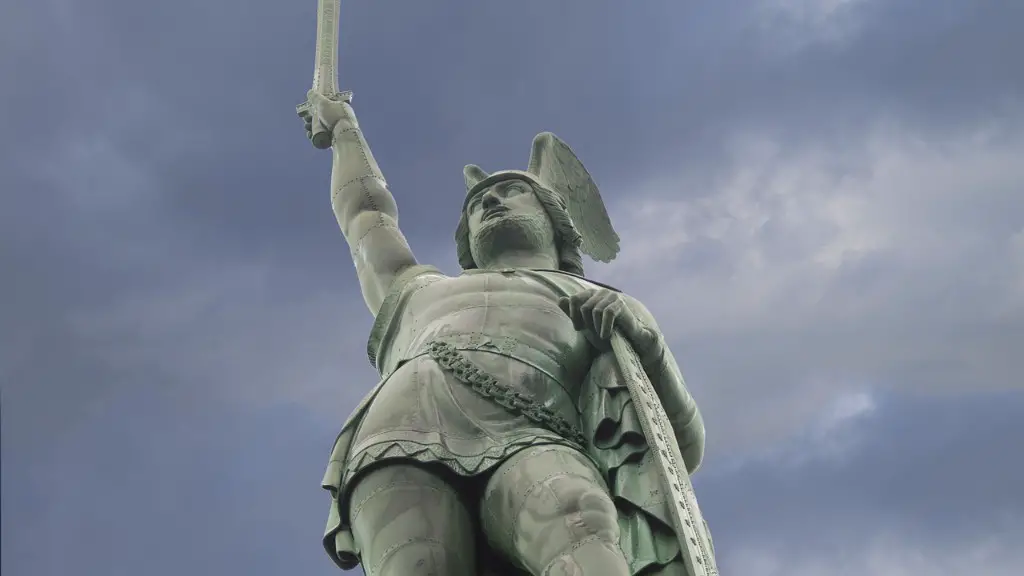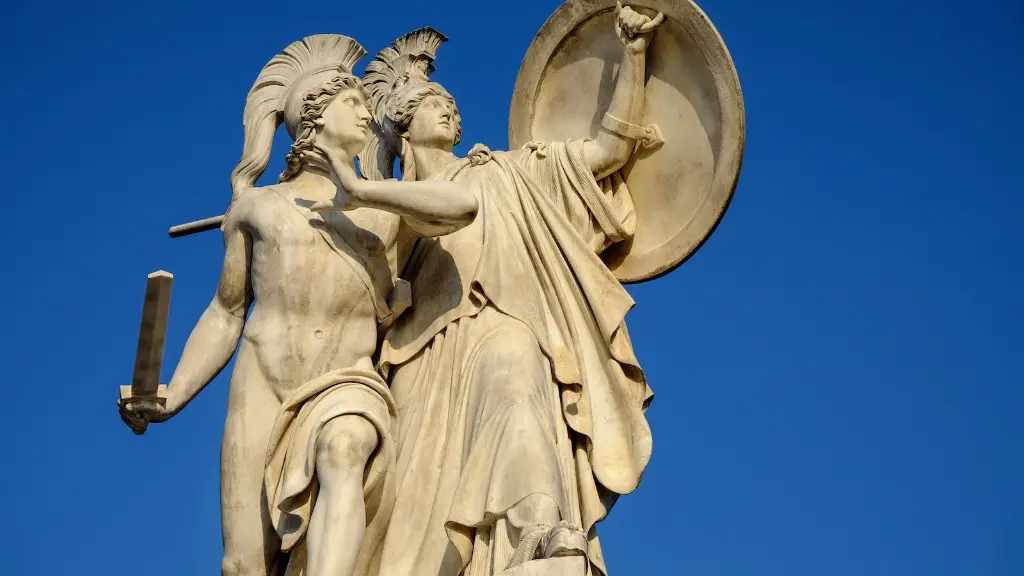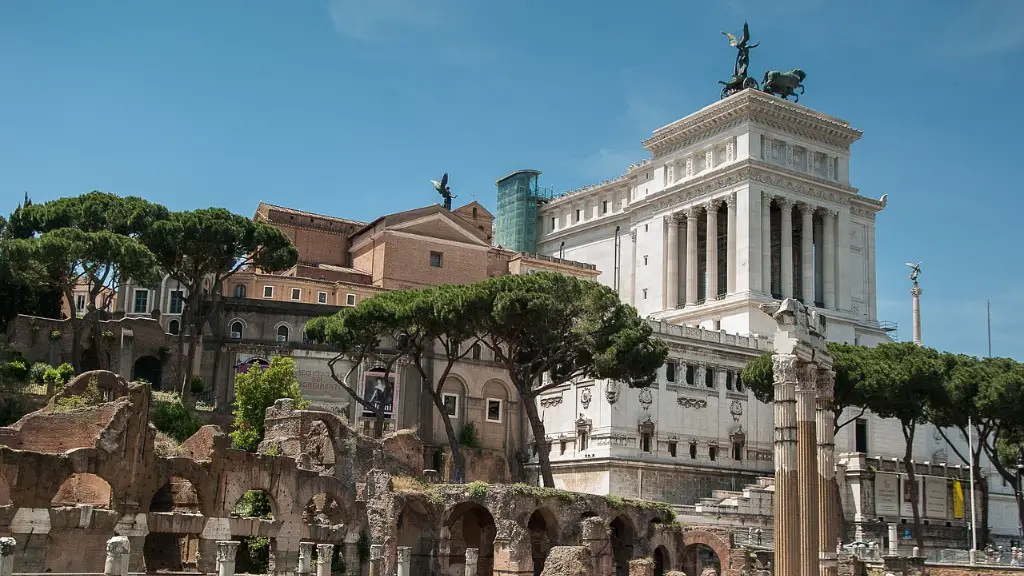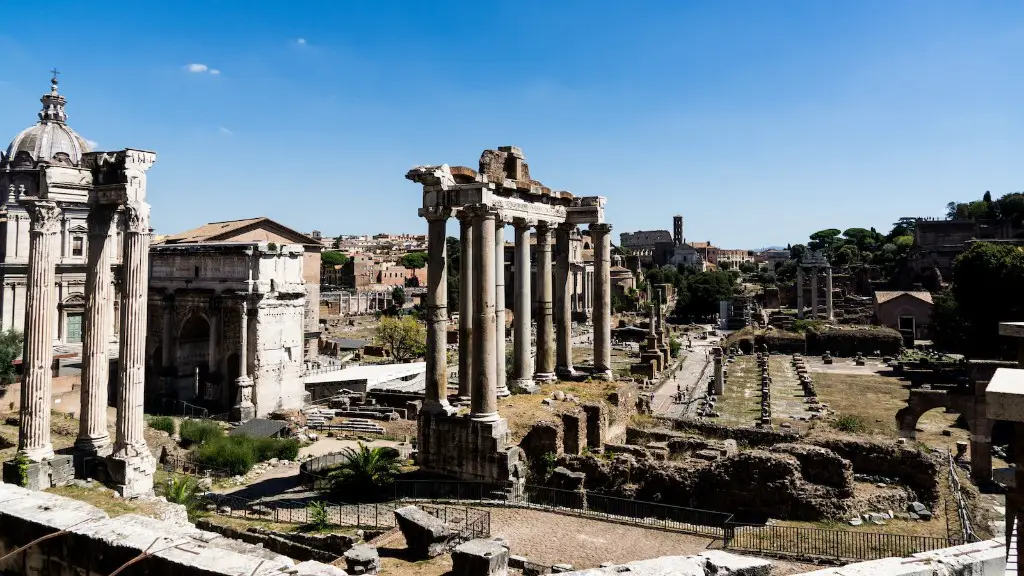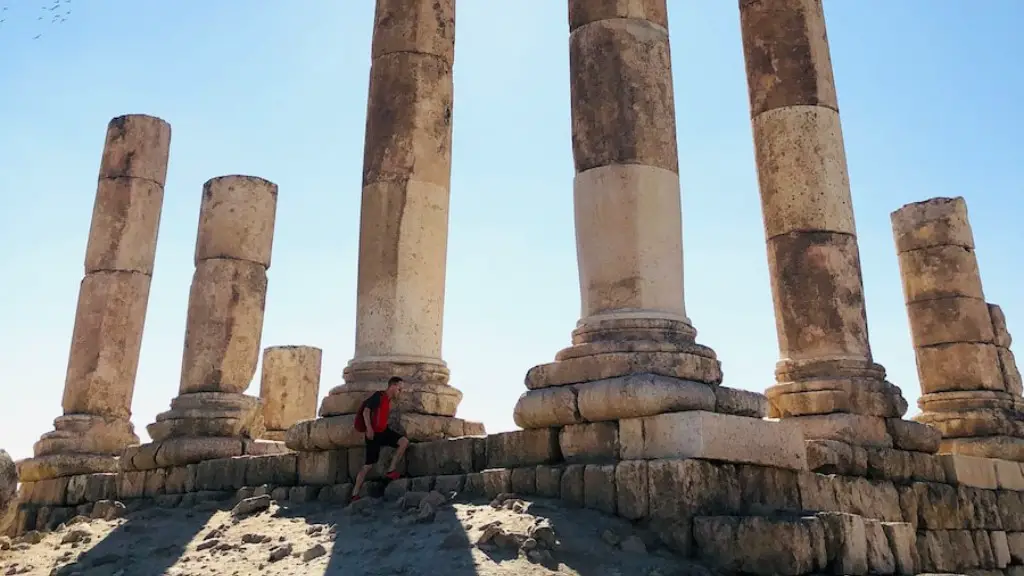The story of Ancient Rome is incredibly complex and plentiful. Roman civilization, which was founded in 753 BCE, is credited with having created a range of lasting foundations for many aspects of the modern world: art, science, technology, literature, law and political structures. When Rome was most powerful, it spanned across much of Europe, the Middle East and North Africa. This period, known as the Pax Romana, began in around 27 BCE and lasted until 180 CE.
Rome is estimated to have had a population of 1-2 million people, making it the largest and most powerful civilization of its time. It had a powerful military, a functioning legal and economic system, advances in arts, writing and architecture. The city was also home to many renowned political figures, wise leaders, and the Roman Senate which was the highest governing body. The Roman Empire had an important impact on different aspects of life, culture, politics and religion.
One of the most remarkable aspects of Roman power was its political influence. The Senate was able to make decisions on major elements of Roman life, such as taxation and foreign policy. The government of ancient Rome also had a provincial system, which ensured that the provinces -or regions- were ruled by magistrates. These magistrates, who were appointed by the Senate and implemented many of the policies set in place by it, could impose fines, institute laws, and even enforce punishment.
The people of Rome considered the military was the most important aspect of power and advancement. The Roman Army was considered to be one of the most powerful forces in the world, and was responsible for controlling huge swaths of conquered territories. Over the centuries, the Roman military made advancements in technology, such as fortification and siege warfare, and experimented with various tactics.
Romans were also masters of engineering and construction, with feats like aqueducts, stadiums, and the Pantheon some of their most impressive achievements. In 60 BC, the city of Rome developed a complex legal system with laws laid out by the Emperor and the Senate. This legal code was the foundation for many modern-day laws, and is still influential in today’s legal systems.
The economy of Rome flourished as well. During the Republican and Imperial periods, Rome got its supplies from all over the world, and its economy expanded significantly. It was one of the first cities to introduce minting coins and banking systems.
One of the most enduring aspects of Ancient Rome was its culture. The city was renowned for its culture and art, from events such as the Roman Games to works of art like the Arch of Titus and the Colosseum. Roman literature and philosophy was also influential in the histories of many cultures.
Religion
Roman religion played an important role in the political and social life of the city. The worship of gods, goddesses, and other deities was an integral part of everyday life, and many of the religious beliefs and practices evolved over time. The religion of Ancient Rome was polytheistic, with numerous gods and goddesses being venerated. Roman religion was practiced widely in the empire, and many people even adopted the religion of Ancient Rome in other parts of the world.
In the religious core of Rome, the Vestal Virgins and the Flavian family were held to be very important. Rituals and ceremonies such as the Vestalia and the Lupercal took place in the city, with the Sibylline books and the Vestal Virgins playing an important part in this. Other religious practices, such as the Lectisternium or the Lion’s Mouth, were also important.
The practice of animal sacrifice and offerings also became popular in Ancient Rome. These took place at the various temples of the city, and were used to show honor and respect to the various gods. In some cases, these sacrifices even involved humans, though they were done sparingly and with great respect. The Pantheon, one of the greatest monuments of Ancient Rome, was built to honor all of the gods.
Architecture
The architecture of Ancient Rome is renowned for its grand and impressive buildings. These structures were some of the first large-scale public works, and included elements such as the Colosseum, the Pantheon, and the Forum. Throughout the Roman Empire, structures such as amphitheatres, theatres, baths, stadiums, and monuments were built, with most being constructed according to the principles of good design.
The scale of these structures was impressive, and even modern architecture is derived from many of their principles. Other Roman architectural achievements include aqueducts, bridges, and the use of new materials and structural forms. The Colosseum, for example, was a large amphitheatre built to be the centre of entertainment in the city and has since become one of the most recognizable structures in the world.
The engineering of arches and other forms was also fundamental to much of the architecture of Rome. Some of the most impressive buildings, such as the Pantheon, used these curves to create impressive spaces. The city was also forward-thinking in the use of technology, with hydraulic mining, smelting, and metal-pressing techniques being common.
Arts and Literature
Ancient Rome was also a center of literature and art. Roman literature was very influential in the Western world, and many of the authors of the time, such as Virgil and Horace, are still well known today. Writers of the time focused on creating works of a religious, political, or philosophical nature, and established many of the conventions still used in literature today.
Roman art was just as important as the literature. Rome was home to some of the greatest sculptors and painters of the ancient world, such as Michelangelo and Raphael. Artworks from the Roman Empire are still studied today, and the various styles of Roman art can be commonly seen in museums and galleries.
In terms of music, Rome was home to many composers, musicians, and poets. Music was a big part of the culture, and many of the instruments used in Ancient Rome are still present in music today. The barbiton, the lyre, and the tibia were all important instruments, along with many others.
Legacy
The legacy of Ancient Rome is still felt today in many aspects of our lives. Its influence can be seen in the language we speak, the things we eat and wear, and the systems of government used by many nations around the world. Rome was a lasting example of what power and influence could achieve, and many of its principles continue to be relevant today.
The architecture, literature and art of Rome remain some of the greatest achievements of the ancient world. Important monuments, books, and works of art still attract thousands of tourists each year and continues to inspire new generations of artists and thinkers. Its culture was highly influential, and many of the customs and traditions of today have been traditionally traced back to Ancient Rome.
Ancient Rome was one of the most powerful civilizations of its time. Although the empire did have its fair share of flaws and societal inequities, one cannot deny its impact on today’s society. Its political structures, legal systems, engineering marvels, and impressive culture still remain an inspiration in our lives today.
